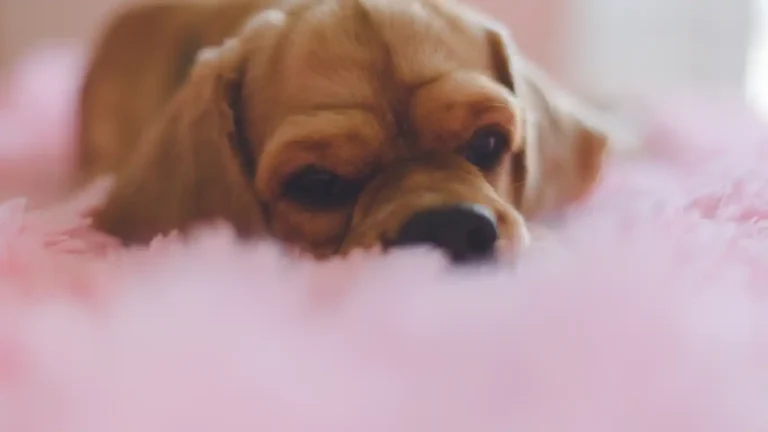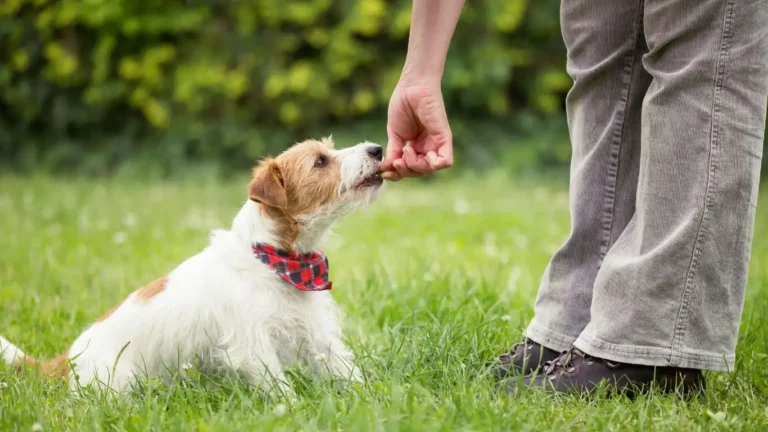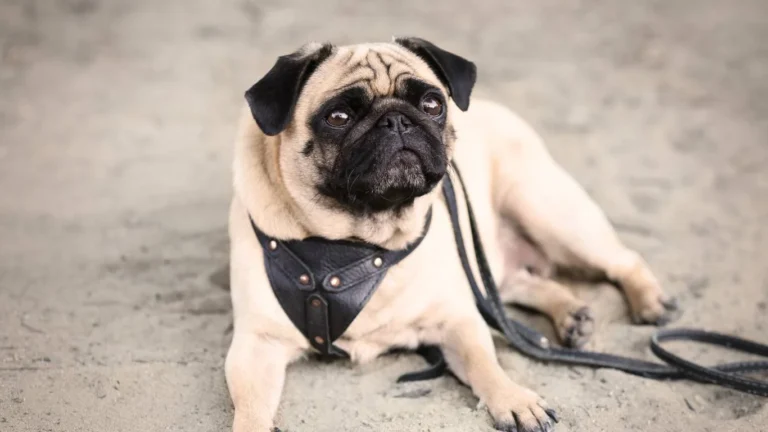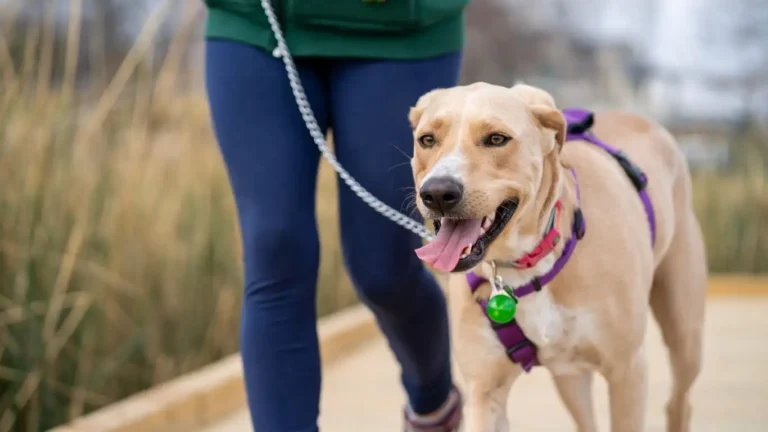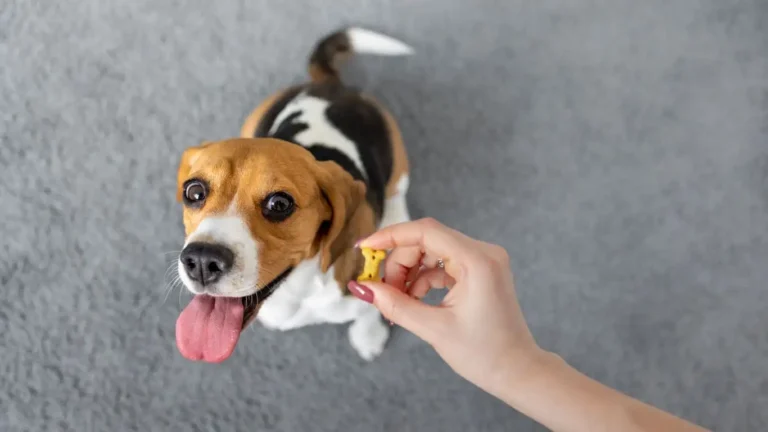How to Train a Dog to Stop Licking Excessively: Effective Tips
As a certified dog trainer, I’ve had my fair share of clients dealing with a common yet perplexing issue: excessive licking. If you’re wondering how to train a dog to stop licking excessively, you’re in the right place! Whether it’s licking their paws, your face, or even furniture, constant licking can become a frustrating habit for both you and your furry friend. In this guide, we’re going to dive into the reasons behind this behavior and provide practical solutions to help you stop it.
Understanding Why Dogs Lick Excessively
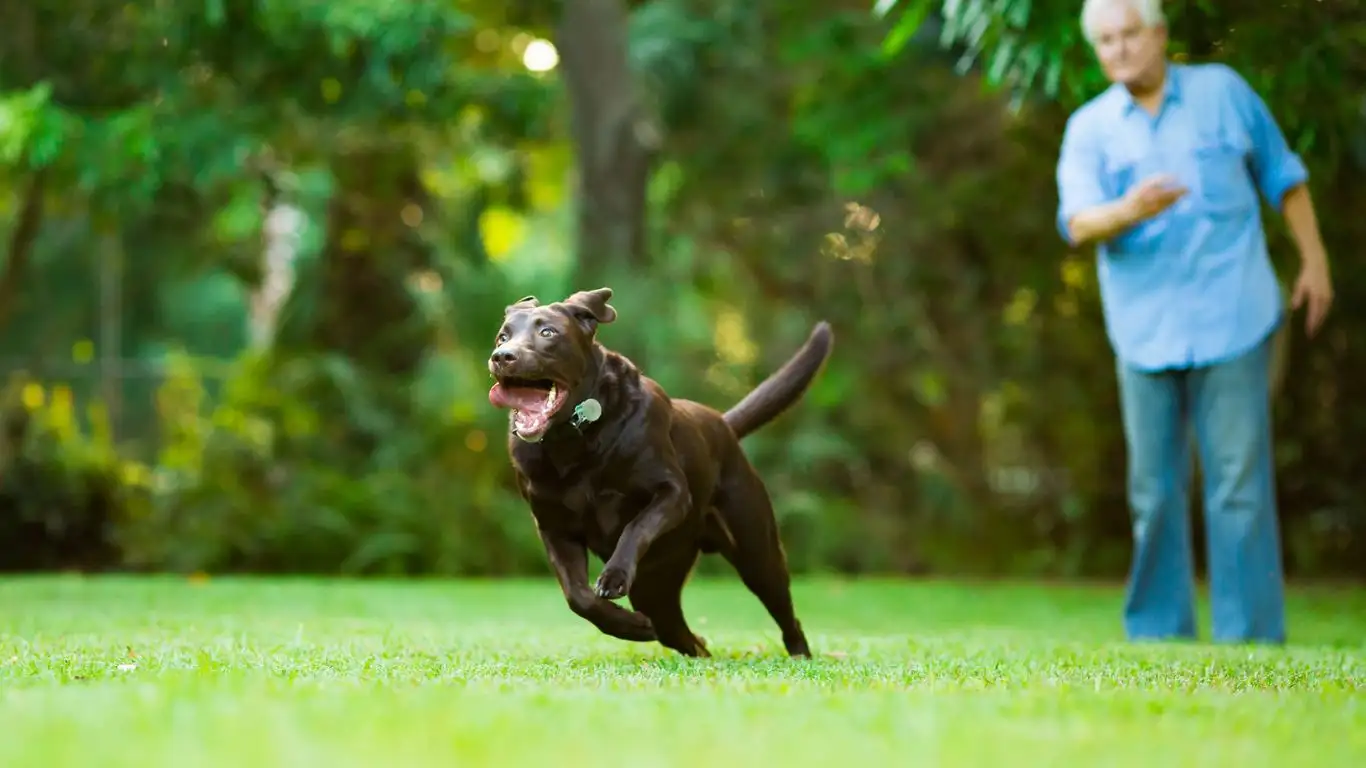
Before we jump into how to train a dog to stop licking excessively, it’s essential to understand why dogs do this in the first place. Excessive licking can be linked to various physical or emotional factors, and identifying the cause is the first step in addressing the problem effectively.
1. Physical Causes of Excessive Licking
There’s no one-size-fits-all explanation when it comes to why dogs lick, but many times, the cause can be traced back to an underlying medical issue. If your dog has suddenly started licking more than usual, it’s a good idea to rule out any health problems. Here are a few common physical reasons for excessive licking:
- Allergies – Dogs can be allergic to various things, from food ingredients to environmental triggers like pollen or dust mites. Allergies can cause itching and discomfort, leading dogs to lick their paws or other parts of their bodies in an attempt to soothe the irritation.
- Infections – Bacterial, fungal, or yeast infections on your dog’s skin can also result in increased licking. These infections cause discomfort and can lead to constant licking in an effort to relieve the sensation.
- Injury or Pain – If your dog is licking a specific area, it could be a sign of injury or pain. Dogs often lick wounds or sore spots to try to heal them or to distract themselves from the pain.
- Parasites – Fleas, ticks, and other parasites can cause intense itching, which can trigger your dog to lick excessively. Make sure your dog is up-to-date on flea and tick prevention.
If you suspect any of these physical issues are causing your dog’s excessive licking, I highly recommend a visit to the vet to rule out medical problems. In some cases, the solution might be as simple as treating an allergy or infection.
2. Emotional and Behavioral Causes of Licking
While physical health issues are often the first thing to consider, excessive licking can also stem from behavioral or emotional factors. Here’s where my experience as a Certified Professional Dog Trainer comes into play. I’ve worked with many dogs who exhibit licking behaviors due to anxiety, stress, or boredom. Let’s look at some common emotional causes:
- Separation Anxiety – Dogs who suffer from separation anxiety often engage in compulsive behaviors like licking. This is their way of coping with the stress of being alone. If your dog is licking excessively when you leave the house or after being alone for a while, anxiety could be the cause.
- Stress and Nervousness – Just like humans, dogs can experience stress. Changes in their routine, new environments, or the introduction of new people or pets into the household can trigger anxiety. Some dogs cope with stress by licking, which can become a repetitive and comforting behavior.
- Boredom – Dogs who don’t get enough physical or mental stimulation may turn to licking as a self-soothing behavior. If your dog is left alone with little to do or is not getting enough exercise, they may start licking out of boredom.
Understanding these emotional triggers is key when deciding how to train a dog to stop licking excessively. This type of licking is often a coping mechanism, and addressing the root cause of your dog’s anxiety or stress will go a long way in curbing the behavior.
How to Train Your Dog to Stop Licking Excessively
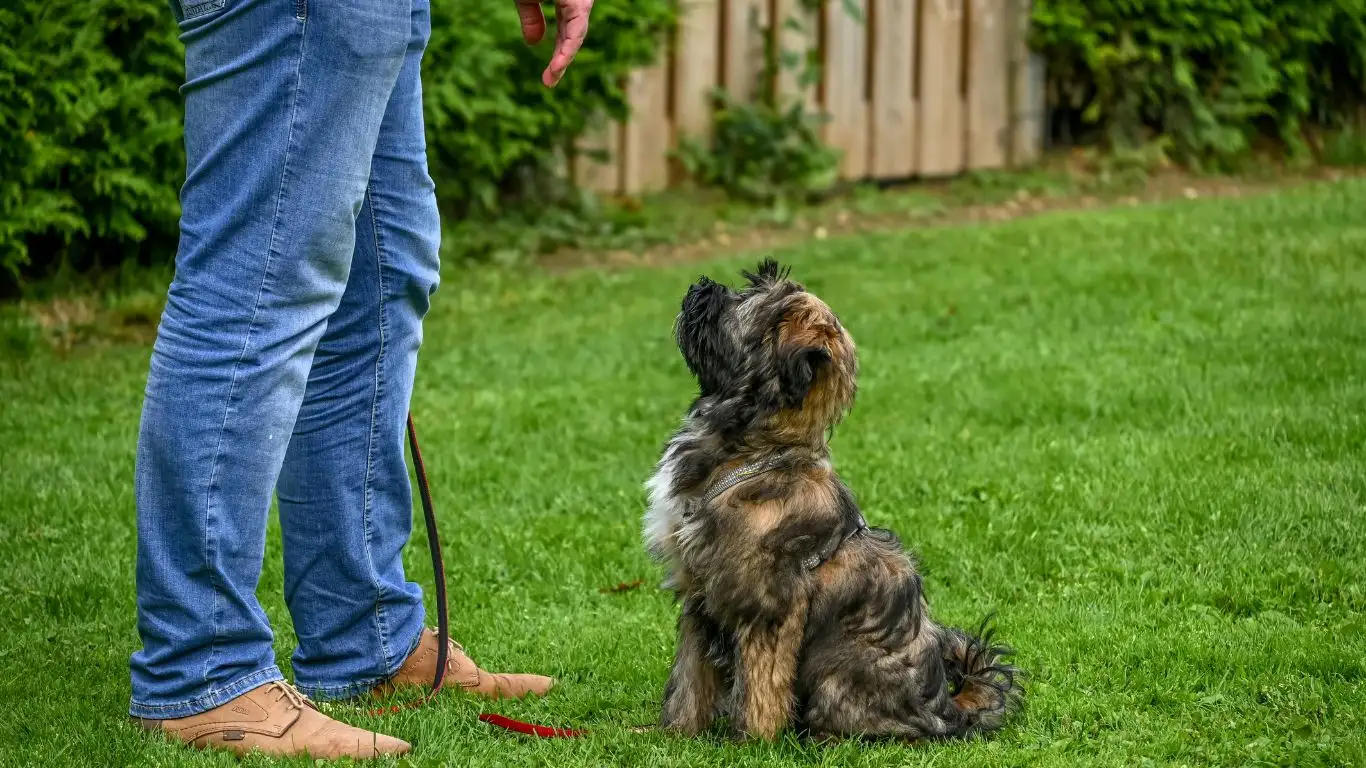
Now that we’ve covered the causes behind excessive licking, let’s dive into how you can train your dog to stop licking excessively. The approach you take will depend on whether the behavior is rooted in physical or emotional factors, but here are some tips and techniques that I have successfully used in my dog training practice:
1. Rule Out Medical Issues
As mentioned earlier, it’s important to rule out any physical health problems before addressing the behavior from a training perspective. A quick check-up with the vet can help you identify any underlying issues like allergies, infections, or parasites. Once you’ve ensured that your dog is healthy, you can focus on the behavioral aspect of the licking.
2. Provide More Mental and Physical Stimulation
If your dog’s excessive licking is due to boredom or lack of stimulation, you’ll need to increase their exercise and mental enrichment. Dogs need both physical and mental outlets to stay healthy and happy. Here are a few ideas:
- Increase daily walks – Regular walks provide not only physical exercise but also mental stimulation as your dog explores the world around them.
- Interactive toys and puzzles – These are great for engaging your dog’s brain and keeping them occupied when you’re not around.
- Training sessions – Incorporating new tricks or obedience training into your dog’s daily routine is a great way to challenge them mentally and redirect their focus from licking to learning.
By providing more mental and physical stimulation, you can reduce your dog’s reliance on licking as a form of self-soothing. You’ll also help build a stronger bond with your dog, which can be especially helpful if anxiety is a factor.
3. Use Positive Reinforcement
One of the most effective ways to train a dog to stop licking excessively is by using positive reinforcement. When your dog starts to lick excessively, gently redirect their attention to something else, like a toy or a command, and reward them when they stop. Over time, your dog will learn that there are better ways to spend their time than licking.
Remember, consistency is key. You’ll need to reinforce the behavior you want to see consistently, and your dog will learn what’s expected of them. Be patient and stay committed to the process, as it might take some time for your dog to break the habit.

Next Steps: Training Your Dog with Consistency and Patience
Now that we’ve covered the basics of understanding and addressing excessive licking, it’s time to start implementing these strategies with your dog. Remember, every dog is different, and it may take time for your dog to stop licking excessively. Stay patient, stay consistent, and most importantly, make sure to show your dog love and understanding along the way. Training is all about building a relationship based on trust, and with the right approach, you’ll help your dog break the licking habit for good.
Addressing Behavioral Issues with Licking
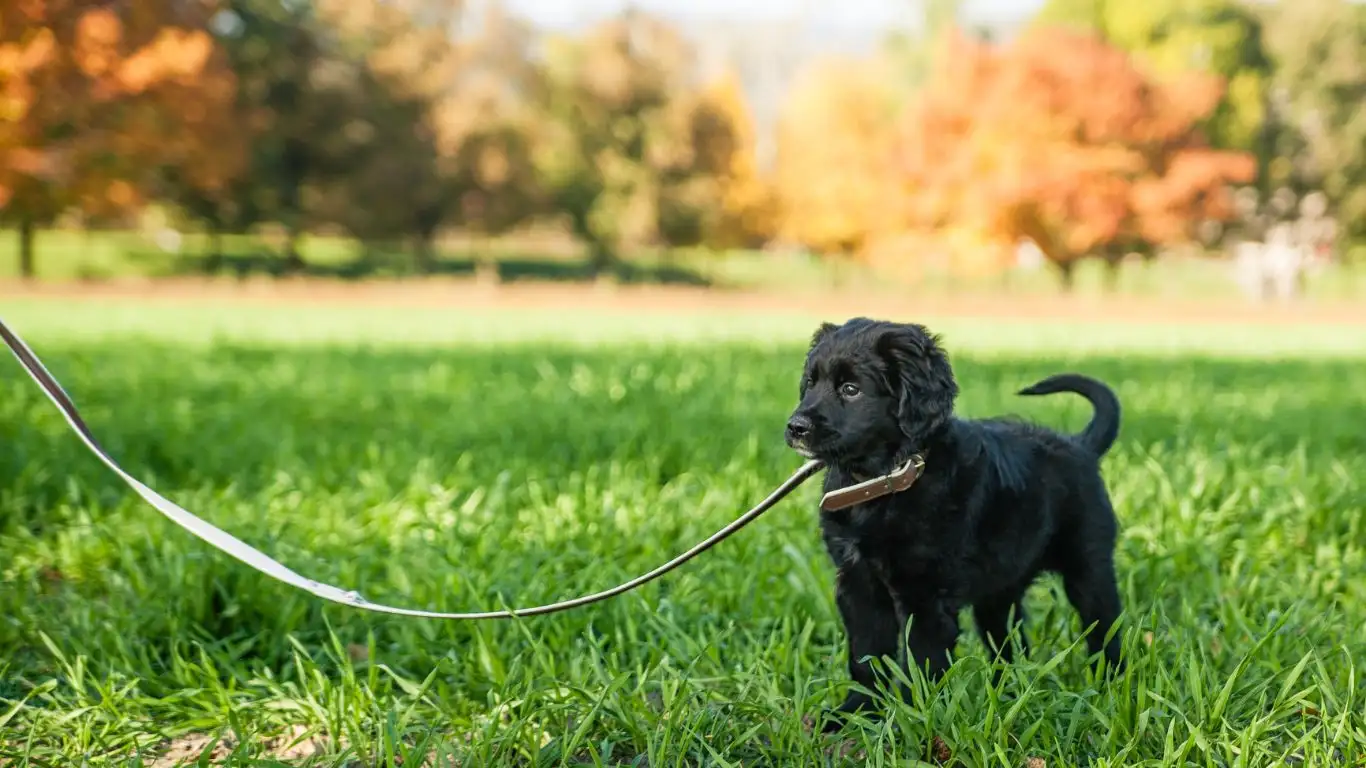
As we discussed earlier, behavioral issues such as anxiety, stress, or boredom can cause excessive licking in dogs. Understanding what triggers these behaviors is crucial for creating a tailored training plan that will help your dog break the habit. One thing I always tell my clients is that solving behavioral problems requires a holistic approach—training, mental stimulation, and emotional support all work together.
1. Tackling Anxiety and Stress
One of the main culprits behind excessive licking is anxiety. Whether it’s separation anxiety, fear of loud noises, or stress from a change in the environment, your dog may use licking as a way to self-soothe. When I’m helping owners with dogs suffering from anxiety, I always emphasize the importance of consistency and patience. Training alone won’t always fix anxiety-related licking—making changes to your dog’s environment and routine can also help significantly.
- Desensitization and Counter-Conditioning – If your dog’s licking is triggered by specific fears or anxieties (like being left alone), desensitization can help. This technique involves gradually exposing your dog to the situation that causes anxiety in a controlled way, helping them get used to it without triggering the licking. Pairing this exposure with positive reinforcement (like treats or praise) helps create a positive association with the trigger.
- Safe Space Creation – Creating a safe space for your dog can help reduce anxiety, especially if your dog is prone to separation anxiety. A cozy crate or a quiet room with their favorite bed and toys can be a sanctuary when you’re away. I’ve seen many dogs benefit from this approach, as it gives them a place to feel secure while also discouraging destructive behaviors like excessive licking.
Along with these strategies, make sure to incorporate calming products into your dog’s routine. Calming sprays, pheromone diffusers, or anxiety wraps like the ThunderShirt can make a noticeable difference. Combine these with training, and you’ll have a well-rounded strategy to address your dog’s anxiety-induced licking.
2. Reducing Boredom and Lack of Mental Stimulation
If your dog’s excessive licking seems to happen when they’re left alone or when they haven’t had enough exercise, boredom could be the issue. Dogs need mental stimulation just as much as they need physical activity. It’s not just about running around at the park—engaging your dog’s brain is just as important.
Here’s where we can get creative. If you’re like me and have worked with dogs for years, you know that mental exercise can be just as tiring as a long walk. When training dogs to stop licking due to boredom, I always suggest using interactive toys that challenge your dog’s problem-solving skills. Puzzle toys, treat-dispensing balls, or even teaching new tricks can redirect their energy and focus away from licking.
- Interactive Toys and Puzzles – Dogs love toys that challenge them to think. These toys often require your dog to manipulate them in a specific way to release a treat or solve a puzzle. The good thing about these toys is that they’re not only fun, but they keep your dog engaged for longer periods, which helps reduce boredom and the urge to lick.
- Obedience and Trick Training – If you’re looking for a way to bond with your dog while also curbing excessive licking, obedience training and teaching new tricks are an excellent solution. Whether it’s sit, stay, roll over, or even something more complex like playing fetch with specific cues, training can be mentally exhausting and an excellent distraction from unwanted behaviors.
By providing your dog with mentally enriching activities, you’re helping them focus their energy on more productive and enjoyable tasks. Boredom is one of the most common causes of excessive licking, so be sure to keep their mind occupied with fun activities!
Using Positive Reinforcement to Stop Licking
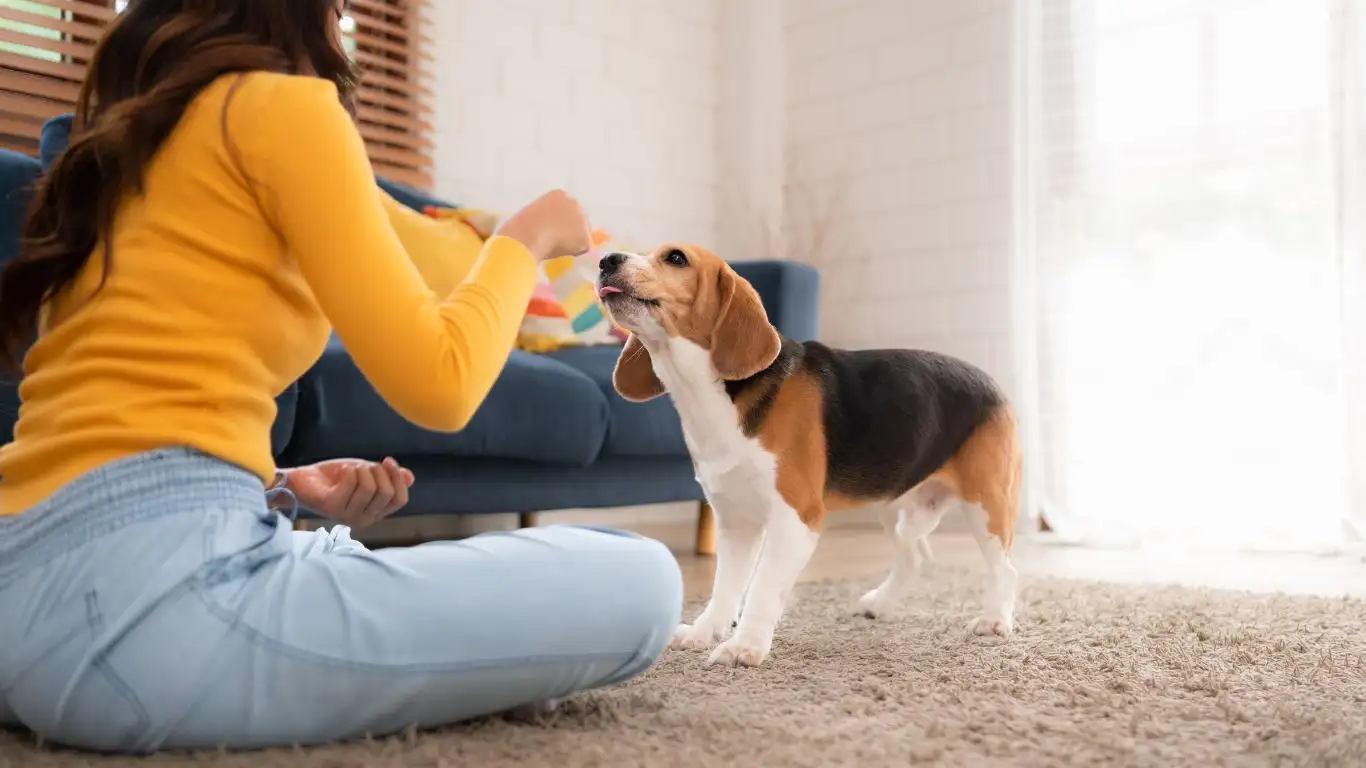
Positive reinforcement is one of the most effective ways to train your dog to stop licking excessively. As I mentioned earlier, consistency is crucial when using this method. The goal is to reward your dog when they stop licking, so they learn that calm behavior brings positive outcomes. It’s all about redirecting their focus to something more appropriate.
1. Reward Good Behavior
Whenever you catch your dog not licking, reward them with praise, treats, or their favorite toy. This positive reinforcement strengthens the behavior you want to see. For instance, let’s say your dog is sitting quietly on the floor instead of licking. That’s the perfect moment to reward them. By doing this consistently, your dog will learn that not licking leads to great things.
In my personal experience, dogs thrive when they know what’s expected of them and when they see the rewards for good behavior. Just like when you’re training for a specific command, use rewards in a timely manner so your dog can make the connection between their actions and the positive outcome. Trust me, it works wonders!
2. Redirect the Licking Behavior
Redirecting your dog’s licking is another key component of training. When you see your dog starting to lick, gently distract them with a toy, a command, or an activity that takes their mind off licking. For example, if your dog starts licking their paws, you could call them over for a game of fetch or ask them to perform a trick they know. The idea is to replace the licking with something more desirable.
As you redirect, don’t forget to use rewards. Each time your dog stops licking and engages in the new behavior, they should receive a reward. This teaches them that they have more control over their actions and that they can choose more enjoyable behaviors.
Creating a Consistent Training Routine
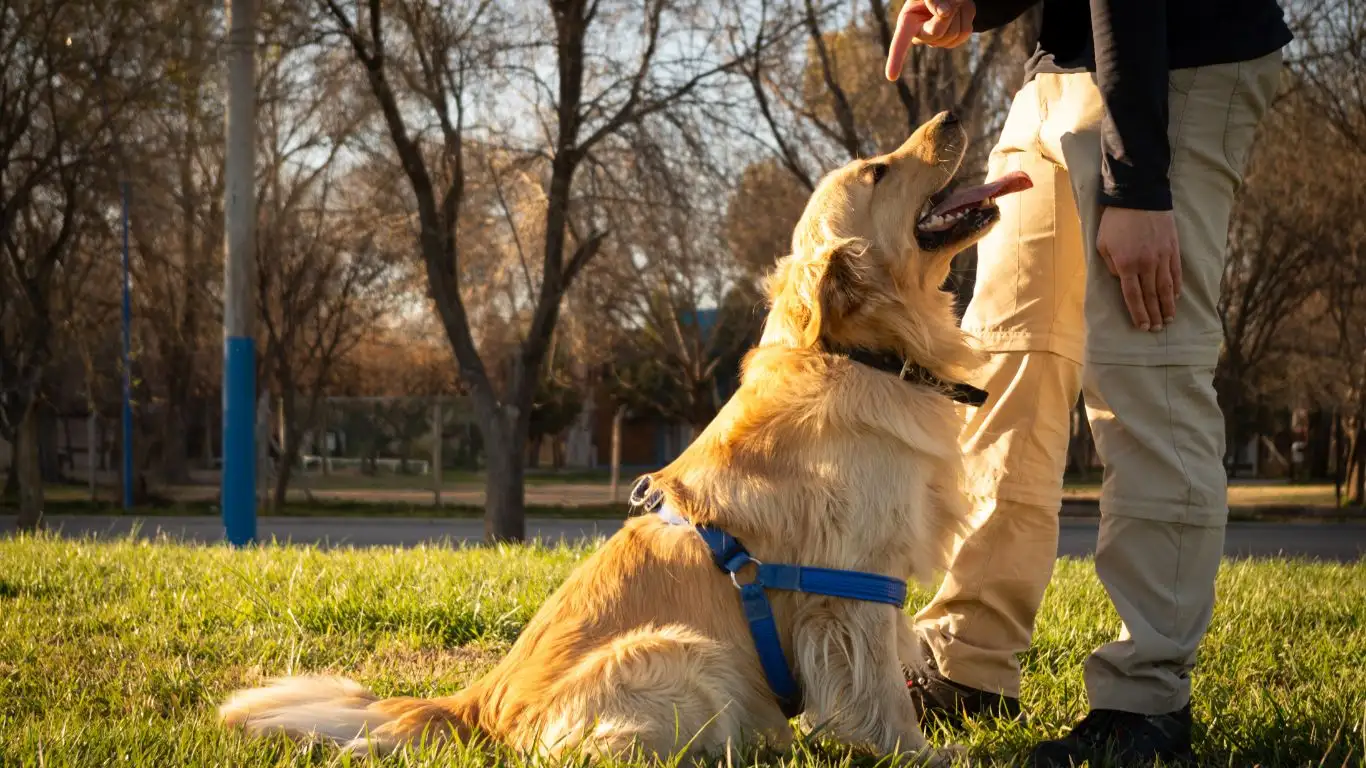
Consistency is key when it comes to training your dog to stop licking excessively. Dogs thrive on routine, and if you’re not consistent with your training, your dog might get confused about what’s expected of them. Here’s how to establish a training routine that sticks:
- Set Regular Training Sessions – Schedule daily training sessions, even if they’re short. Ten to fifteen minutes of focused training each day can make a big difference over time. These sessions should include practicing commands and reinforcing good behavior like not licking.
- Integrate Training into Daily Life – Don’t limit your training to just sessions. Incorporate what you’re teaching your dog into your daily interactions. For example, when you’re walking your dog, ask for a sit or stay before crossing the street. These little moments can help reinforce your training.
By maintaining consistency and patience, you’ll set your dog up for success and help them stop licking excessively. Remember, training is a journey, not a race. Take your time, and celebrate the progress, no matter how small!
Additional Tips for Preventing Excessive Licking

As we wrap up our guide on how to train a dog to stop licking excessively, I want to share a few more tips that have worked wonders in my experience as a Certified Professional Dog Trainer. These additional strategies can complement the training techniques we’ve already discussed and further improve your dog’s behavior. It’s important to remember that training a dog is a marathon, not a sprint, and every small victory counts!
1. Provide Structured Playtime
One of the most effective ways to prevent excessive licking is by providing your dog with structured playtime. When dogs are allowed to play freely, they might end up in a licking cycle, especially if they’re bored or seeking attention. Structured play helps channel their energy into positive behaviors. I’ve seen firsthand how a game of fetch, tug-of-war, or interactive play can provide physical and mental exercise for your dog, reducing their need to lick out of boredom.
During these play sessions, it’s important to keep the environment engaging and fun. This helps distract your dog from licking and teaches them that there are more rewarding ways to spend their time. Not only will this help prevent excessive licking, but it will also strengthen the bond between you and your dog.
2. Use Training Tools Wisely
Sometimes, training tools can offer additional support when trying to break a behavior like excessive licking. While tools like collars, harnesses, and head halters aren’t a solution on their own, they can be helpful when combined with proper training techniques. For example, a no-licking collar can be useful to stop your dog from licking certain areas, but it should be used sparingly, as it’s essential that the dog still learns the underlying behavior modification techniques.
In my experience, these tools can be effective short-term solutions if your dog is constantly licking due to anxiety or obsessive behavior. However, always remember that tools should be seen as a supplement to proper training, not a substitute. They can provide immediate relief while you work on the deeper behavioral causes of excessive licking.
3. Rewarding Calm Behavior Throughout the Day
Many pet owners make the mistake of only rewarding calm behavior during training sessions. However, rewarding your dog for being calm and composed throughout the day can be an even more powerful tool. By giving your dog praise and treats when they’re relaxed, you teach them that being calm is desirable at all times, not just during a training session.
This method helps reinforce calmness during regular activities, like while lounging at home or resting in their crate. Over time, your dog will learn that peace and relaxation lead to rewards, and licking will become less frequent as a result. I’ve had great success with this approach—dogs seem to understand that they get positive feedback for being calm at every moment, which reduces their need for anxiety-based behaviors like excessive licking.
Addressing Extreme Licking Behavior
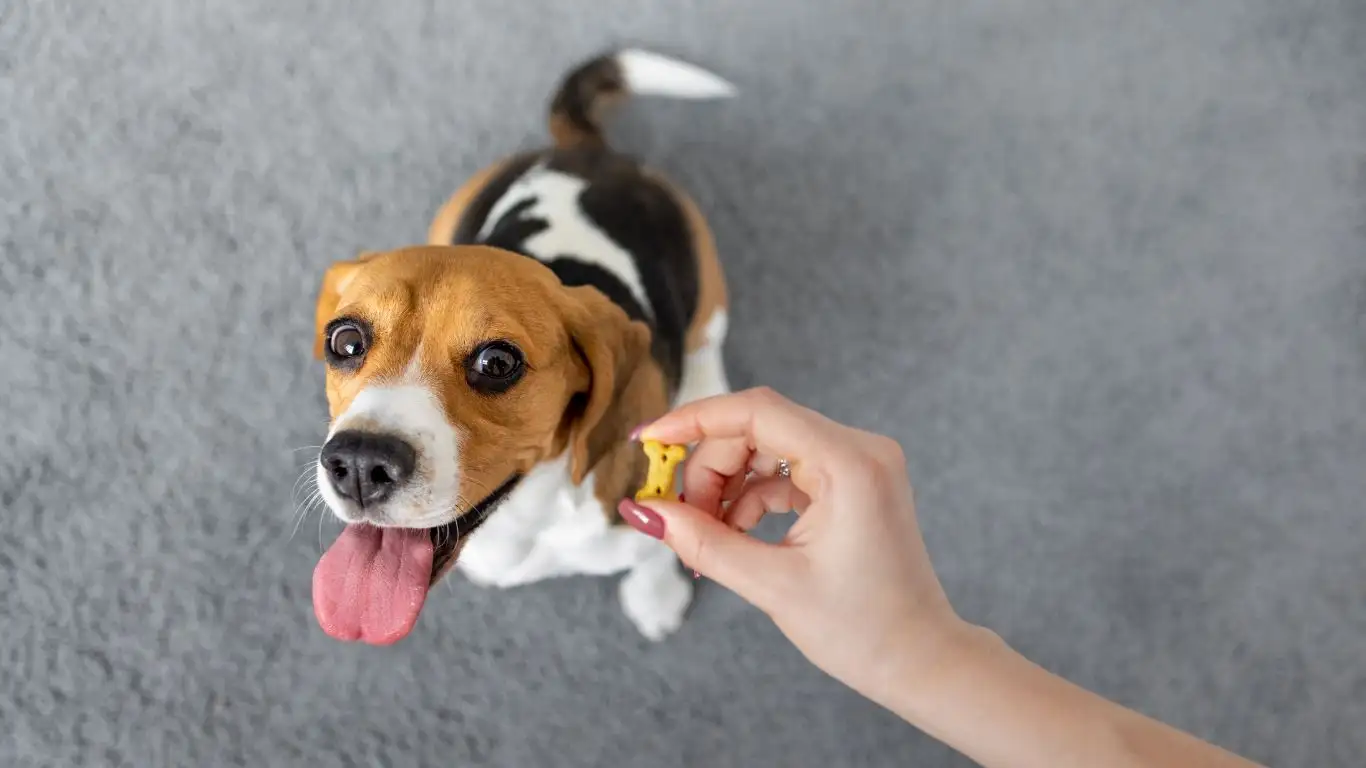
In some cases, excessive licking may escalate to a point where it becomes compulsive or damaging. If your dog’s licking is causing injury or is accompanied by obsessive-compulsive tendencies, it’s time to take further action. In these situations, I always recommend consulting with a professional dog behaviorist or trainer who specializes in more extreme cases. It’s important not to ignore these behaviors, as they can worsen over time if left unchecked.
Sometimes extreme licking can also be a sign of more serious emotional or physical issues, such as unresolved separation anxiety or chronic pain. In these cases, professional intervention is crucial, and treatment may involve a combination of behavioral modification and medication prescribed by your veterinarian.
Don’t be discouraged if your dog’s licking becomes more challenging to manage—it’s simply a sign that more intensive training or medical attention may be necessary. As always, the key is consistency and seeking help when needed.
Understanding the Importance of Patience
One of the most important lessons I’ve learned over the years as a dog trainer is that patience is essential. Whether you’re training a dog to stop licking excessively or addressing any other behavior, results won’t happen overnight. It’s easy to feel frustrated when progress seems slow, but the key is to stay patient, consistent, and compassionate with your dog.
Every dog is different, and some may take longer than others to break the licking habit. This is perfectly normal, and it’s important to adjust your expectations accordingly. I always tell my clients that small improvements are still progress. Don’t be disheartened by occasional setbacks or moments of licking—it’s all part of the training process. Celebrate the little victories, and keep going!
As you work through these training strategies, keep in mind that the bond you’re building with your dog is just as important as the results. Every moment of patience, every positive reinforcement, and every successful training session strengthens your relationship with your furry friend, making your connection even more special.
References
- PawPatron – Resources for dog training, behavior tips, and pet care advice.
- American Kennel Club (AKC) – Dog training tips and behavior advice from experts.
- Cesar’s Way – Dog behavior training and problem-solving techniques from Cesar Millan.
Disclaimer
While I strive to provide helpful and accurate information on dog training and behavior modification, every dog is unique, and results may vary. The advice provided in this article is based on my experience as a Certified Professional Dog Trainer and should not replace professional veterinary care. If you’re concerned about your dog’s excessive licking or behavior, it’s always a good idea to consult with a veterinarian or a certified behaviorist for a more personalized approach.
